1971 Continental Mark III: Iacocca’s Crown Jewel
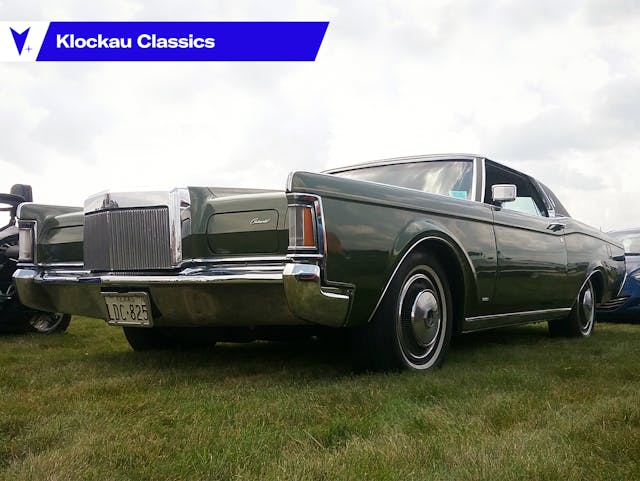
Lido A. Iacocca was a polarizing figure, there’s no question about it. But he had a major part in many of Ford Motor Company’s successes in the 1960s and ’70s. The original Mustang, today’s subject, the Mark III, the Granada, and even the Mustang II (hey, love it or hate it, it sold, it was the right car at the right time, it made beaucoup money for Ford, and it was perhaps closer to the original ’65 than many Mustang fans are comfortable with). Some would say Iacocca took credit for the work of others, accepted all the glory, and imposed his will at his own peril. Alternately, he was a super salesman, made his career from nothing, was never afraid to stand up for something he wanted badly, created new market segments no one else had yet thought of, and saved a car company at the brink of being toast. Few are neutral about the man. But I fall a bit more into the latter camp, and the subject of today’s daily dose of Lincoln is the reason why: The magnificent Lincoln Continental Mark III.

That’s right, ladies and gentleman, “Klockau” is in the byline and the subject is Ford Motor Company’s finest. For my regular readers (all three of you), you just know there’s going to be a positive push for plush Lincolns! And you would be correct. Well, what can I say. My Grandpa Bob and Grandma Ruby were Ford people for many years, with multiple Lincolns and Thunderbirds playing a part in my childhood car memories.

And in 1968, my grandfather traded his green over green 1966 Lincoln Continental sedan for a triple dark green 1969 Mark III. He loved that car. One interesting thing my father recently told me: That Mark was the first one that Bob Neal Lincoln-Mercury, of Rock Island, Illinois, ever got in. My grandfather saw it sitting there and bought it on the spot.
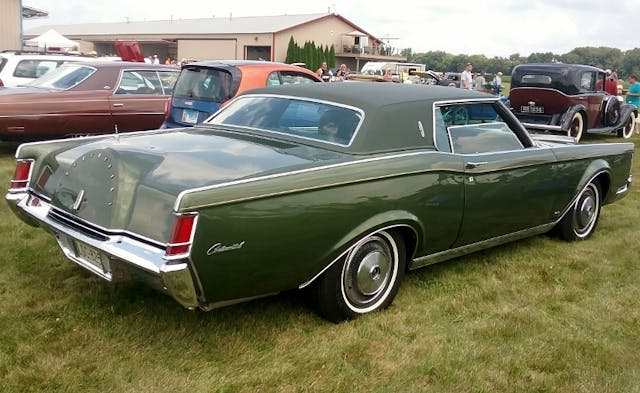
Indeed, he loved it so much that he traded it for the all-new 1972 Mark IV. Like the Mark III, it too was dark metallic green, with matching leather and top. Then that one was traded for a triple navy blue 1977 Mark V. Iacocca was certainly onto something. The value of the renewed Mark III (there was a previous Mark III in 1958, but Ford decided to rewrite history) definitely exceeded the sum of its Thunderbird-derived parts. The inaugural 1969 model sold 30,858 units—initially at $6585 ($53,141 today), later bumped to $6741 ($54,400). The Mark III was introduced in April 1968, but all cars were officially 1969 models, much like all first-year Mustangs were 1965s—“1964 1/2” designations notwithstanding.

Despite the admittedly long model year, Mark III sales were quite substantial, considering 1969 Continental sedan and coupe sales came to 29,351 and 9032, respectively. Lincoln was clearly on to something. The 460-cubic-inch V-8 produced 365 horsepower through its four-barrel Autolite carburetor and had a curb weight of 4866 pounds. All 1970 models received redesigned door panels and upholstery sew style, new wheel covers, and other small details, plus a price increase to $7281 ($55,578). With a standard production interval for this year, production went down to 21,432.
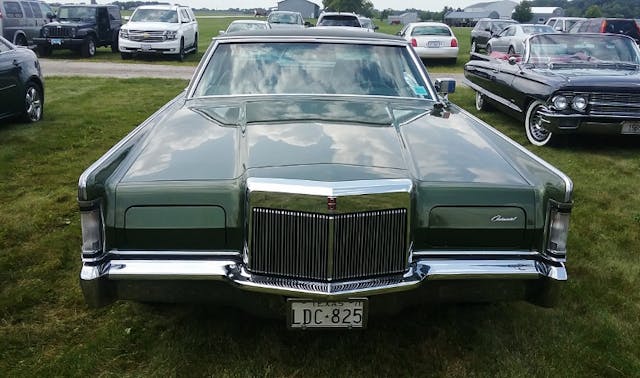
Ninety-six percent of 1970 Continental Mark IIIs had air conditioning and tinted glass, and 88 percent had a tilt steering wheel. I suspect the four percent of non-A/C Marks were sold in Minnesota and Alaska (haha). A myriad of color choices—including optional Moondust colors, such as Red Moondust, Ginger Moondust (as seen on the Mark III in the terrific 1971 film The French Connection), or Ivy Moondust (as seen on our lovely example here) were available, plus a cornucopia of interior color choices. More than anything else, I have always associated luxury cars with a vast amount of both interior and exterior color choices.

You see, back then most people ordered their Lincolns, Cadillacs, and Imperials from a dealership. And when you’re spending over seven grand—a substantial sum in the Year Of Our Lord 1971—one was not going to buy a car off the lot and settle for a color they weren’t fond of. No, sir. You’d want to order exactly the car you desired: color, trim, options, sunroof, the whole nine yards. And most did. It was a different time, for sure.

Personally, the colors on this 1971 model, owned by my friend and fellow LCOC Lake Shore Region club member, Humberto Garcia, were just about perfect to me. I’d seen the car at several club events, but I finally got some suitable photos of it in August 2018 at a show at the airport in Poplar Grove, Illinois.
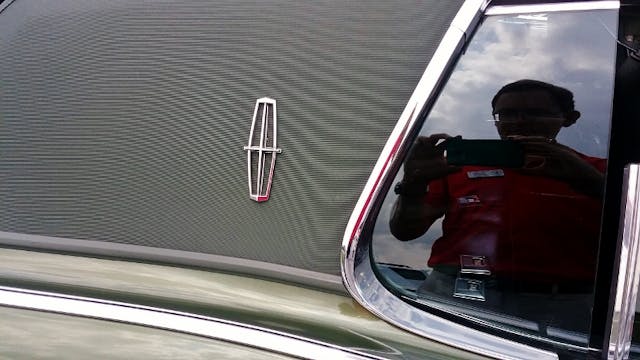
I love the Ivy Moondust paint, with that oh-so-excellent matching dark green leather and vinyl roof. My Grandpa Bob’s 1969 Mark III was essentially the same color combination, so this was as close as I’ve yet gotten to seeing, in person, his car.

The easiest way to tell a 1970 model from a ’71 model is that most ’71s received high-back seats, though the sew style remained the same as the previous year. I prefer the separate headrests; the high-back seats always make me think Mustang, for some reason.

However, even that is not conclusive. While the high-back seats appeared on early ’71s, there were some complaints about them, so Lincoln made the low-back seats with adjustable headrests a no-cost option shortly thereafter.

The 1970 and ’71 Continental Mark IIIs also received genuine walnut trim on the instrument panel. About 25 years ago, a friend of my father’s was performing some cosmetic restoration on a 1971 Mark III, and I got to sit behind the wheel.

The gangly, bespectacled 14-year old version of your author was immediately smitten with the interior—those instrument binnacles framed by real wood and the Cartier clock with the second hand seamlessly sweeping across its face. Wow, is this the life! Imagine the pleasure of driving one on a regular basis. Yowza.

The Continental Mark III not only stole the hearts of FoMoCo faithful, it also attracted admirers from “the other luxury car make.” And eventually, the Mark would trounce Cadillac’s Eldorado in sales—though Cadillac would still handily outsell Lincoln as a whole for many years thereafter.

Last call for the Mark III was 1971, when 27,091 sold at $8421 ($61,582) a pop. Clearly Lincoln—and by association, Lee Iacocca—had a hit. Who could blame Iacocca for using past successes to create new ones when he helmed Chrysler in the early ’80s? And the LeBarons certainly sold well. I remember many of them when I was a kid.

Times were changing though, and by about 1990, the “Mark III formula” really didn’t have the sparkle and attraction it once held. The retro-Brougham 1990–93 Chrysler Imperial, while a car I personally like, just couldn’t stand up to the new-for-1992 Cadillac Seville, a tasteful modern take on American luxury. But I will give Mr. Iacocca a pass on that, for he gave us some truly wonderful Lincolns. It all started with the timeless Continental Mark III.

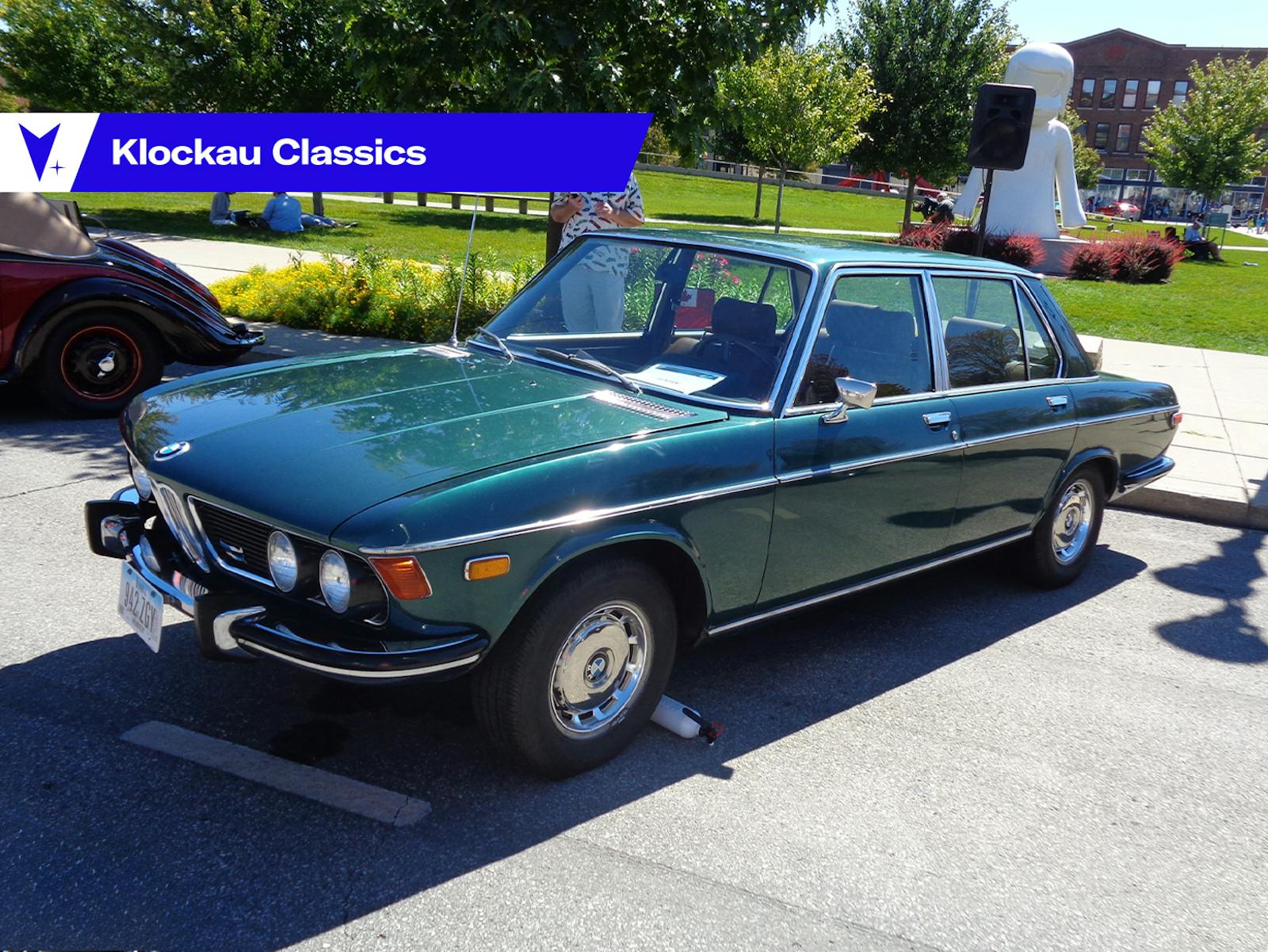

There were times when Lincolns were branded as Lincoln, Continentals were branded as Continental and then the “all-inclusive” Lincoln Continental encapsulated the best of both brands. IMO? … the Lincoln Continental Mark III was the premier! … although it can be argued that the “Slab-side” Lincoln Continentals of the 60’s are most recognized and coveted!
The Mark III wasn’t a Lincoln, it was just “Continental Mark III”
I currently own 15 Mark III’s
Wow, didn’t know I was 1 if 3. Keep up the good work, I enjoy them very much!
The main reason why I bought a Sixties Lincoln convertible… is that it was a FOUR-door convertible sedan. …. I despise two-door cars . . .
I love my 1970 Mark III. IT ALSO HAS THE SUNROOF! 1 of 200 that year. Wimbledon white ,with black top and interior. Very clean with very little issues.